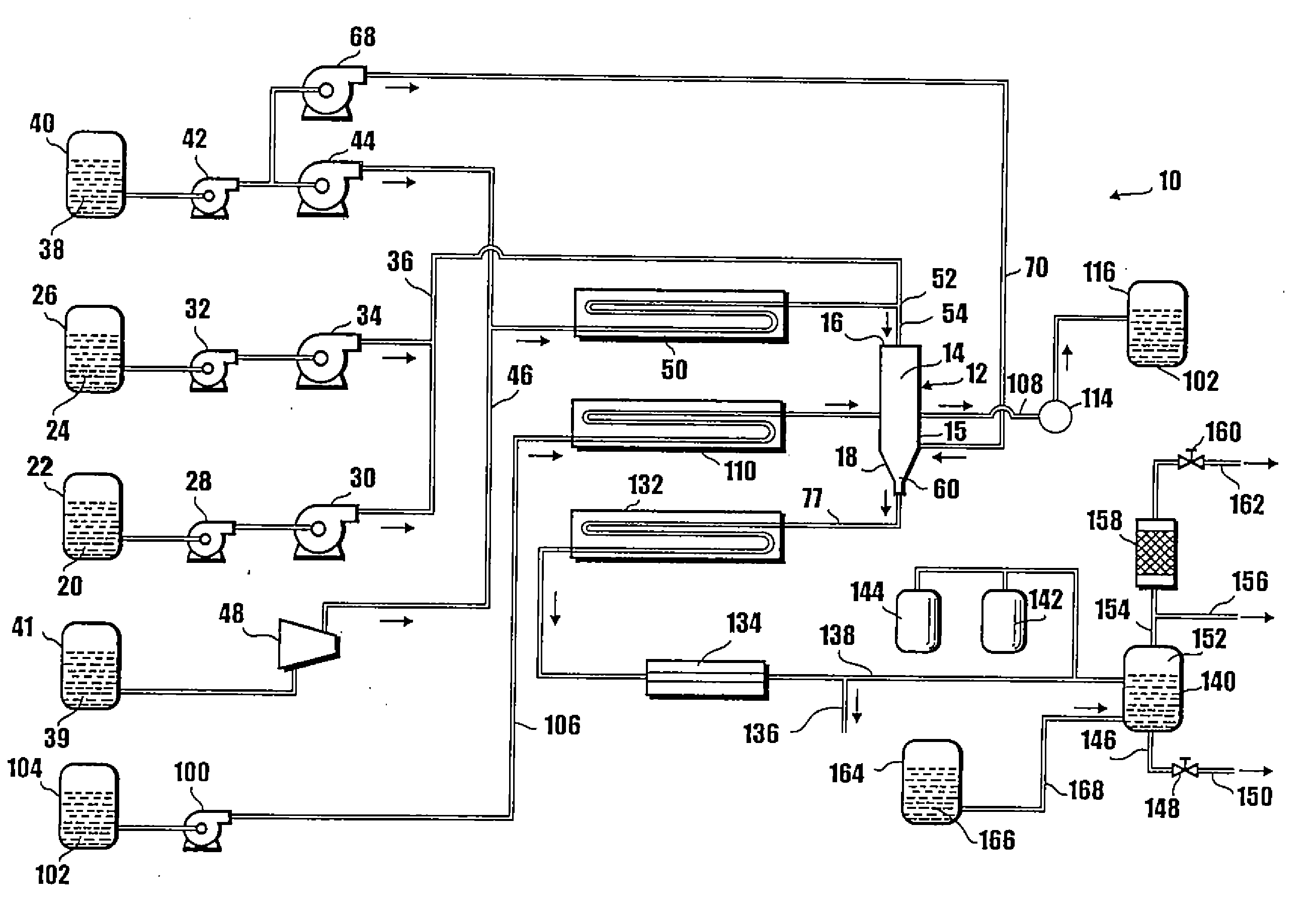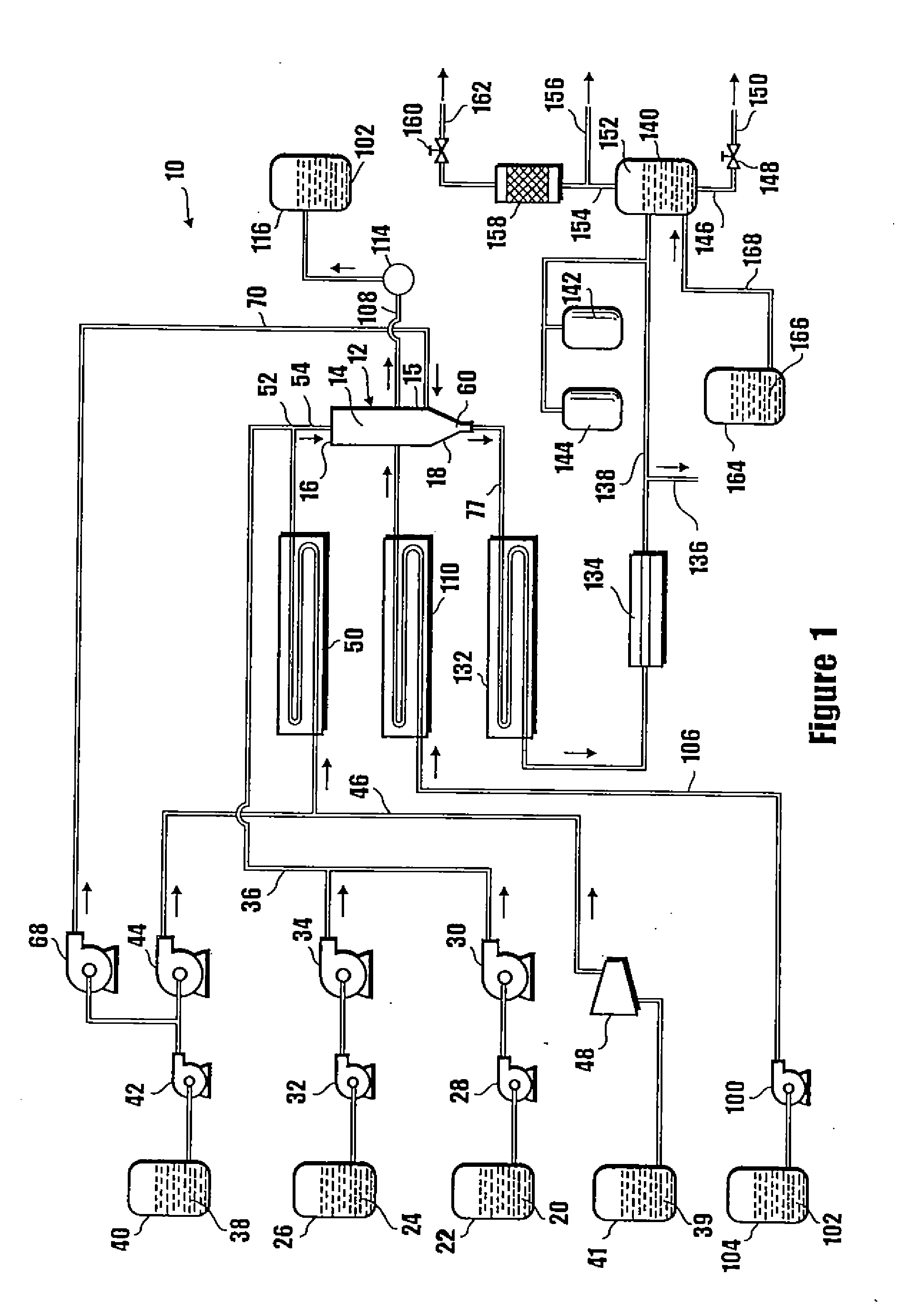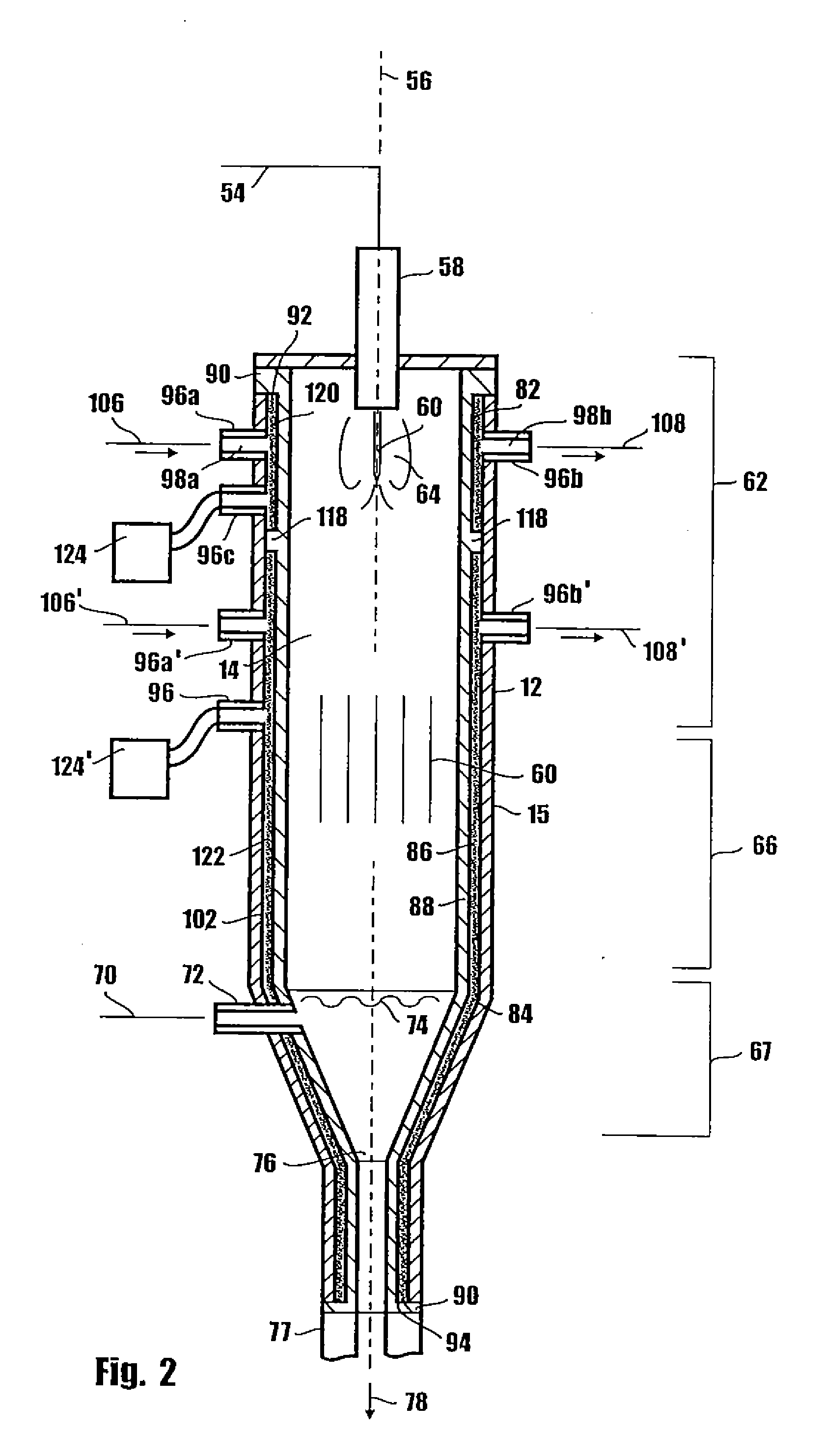System and Method for Hydrothermal Reactions - Two Layer Liner
a hydrothermal reaction and two-layer technology, applied in the direction of superimposed coating process, supercritical condition process, transportation and packaging, etc., can solve the problems of inability to achieve oxidation degree, inability to use conventional wet oxidation, inability to reduce reaction times of this length, etc., to achieve the effect of preventing accumulation of insoluble salts on the liner and reducing corrosion rates
- Summary
- Abstract
- Description
- Claims
- Application Information
AI Technical Summary
Benefits of technology
Problems solved by technology
Method used
Image
Examples
Embodiment Construction
[0013] In accordance with the present invention, a system for performing hydrothermal treatment at temperatures above three hundred seventy-four degrees Celsius (374° C.) and pressures above about 25 bars, includes a reactor vessel that is formed with a pressure bearing wall which surrounds a reactor chamber. Generally, the feed material is introduced into the reactor chamber from one end of the reactor vessel and the reaction products are withdrawn from the other end of the reactor vessel.
[0014] The surface of the pressure bearing wall that faces the reactor chamber is covered by a liner to protect the wall from exposure to temperature extremes, corrosives and salt deposits. The liner is formed with a porous layer and a non-porous, corrosion resistant layer. The corrosion resistant layer is positioned adjacent to the porous layer to interpose the porous layer between the corrosion resistant layer and the wall of the vessel. Seals extend from the ends of the corrosion resistant lay...
PUM
| Property | Measurement | Unit |
|---|---|---|
| pressure | aaaaa | aaaaa |
| temperature | aaaaa | aaaaa |
| pressure | aaaaa | aaaaa |
Abstract
Description
Claims
Application Information
 Login to View More
Login to View More - R&D
- Intellectual Property
- Life Sciences
- Materials
- Tech Scout
- Unparalleled Data Quality
- Higher Quality Content
- 60% Fewer Hallucinations
Browse by: Latest US Patents, China's latest patents, Technical Efficacy Thesaurus, Application Domain, Technology Topic, Popular Technical Reports.
© 2025 PatSnap. All rights reserved.Legal|Privacy policy|Modern Slavery Act Transparency Statement|Sitemap|About US| Contact US: help@patsnap.com



